 Photo courtesy of Jessica Bell Do you sit down at the keyboard and just write, a vague idea of the characters and their story swirling around in your head? Do you just throw stuff at the characters and see what happens? Then you’re a pantser* who writes by the seat of your pants.
But perhaps you plan each scene and chapter in meticulous detail – after having constructed detailed pen portraits of your characters – and pay careful attention to the rules of structure used by your genre. Undoubtedly, you’re a plotter.
Well, I’m not entirely sure these extremes exist, in the same way that Elinor and Marianne Dashwood don’t, but are symbols for extremes of Sense and Sensibility.
When I write, I usually start classically: a character who is suddenly faced with a terrible dilemma, but I only discover how she’s going to resolve it once I start writing her story. However, sensible hat back on, I do like to know the point she’s going to reach at the end. The story has to have some definite purpose otherwise it becomes a soup of pure muddle.
But if I don’t have free rein to develop the story, let the characters spark off each other and encounter and deal with setbacks, then I don’t enjoy the actual writing. There’s no point in creating a story if you can’t have fun doing it! Nor do you have the dedication to keep going through weeks and months of typing slog if you aren’t intrigued by what happens in the story.
I’ve just published the third book in my contemporary thriller series and have written ten novels in my alternative history thriller series so I think I’ve learnt how to resolve this dilemma for my own writing process. Yes, I’m acquainted with the main character in each story and I want to find out what happens next to her and the people around her.
But that’s it.
I let her (usually a ‘her’) run around in my head a bit, to have some adventures, get into trouble, struggle to get out, land in more – you know the rest. More than anything, I have to get to know her, to find out what she wants, what’s stopping her, what she has to do, or Goal, Motivation, Conflict, as creative writing tutors call it.
My way of doing this is to make myself jot down 30 lines of plot. Less an outline, more of a wireframe as I like the 3D analogy better.
Line 1: The beginning – the inciting incident/kick-off
Line 2: Impact and realisation of that event/situation
Line 3: The plan to resolve it
Line 6: First enormous set-back (turning point 1)
Line 15: First glimmer of light (turning point 2)
Line 21: Gritting on in face of terrible odds and sacrifice (turning point 3)
Line 25: Despite developments, we might be getting there – the false dawn
Line 28: Catastrophe/black moment – do or die
Line 30: The end – the resolution and loose-end tying-up
I haven’t put all the lines in, but you get the idea. It’s not fixed but it gives you a skeleton which holds the whole thing together but which will become absorbed into the finished product and never be seen by the reader.
Once you have these thirty lines and accept that you will inevitably change or omit some of the lines and substitute new ones, then you can release your inner pantser, and create and imagine to your heart’s content.
*If you want a more high-flown expression instead of pantser, you can use ‘discovery writer’. But it means the same thing. 🙂
Alison Morton is the author of Roma Nova thrillers – INCEPTIO, CARINA (novella), PERFIDITAS, SUCCESSIO, AURELIA, NEXUS (novella), INSURRECTIO and RETALIO, and ROMA NOVA EXTRA, a collection of short stories. Audiobooks are available for four of the series. Double Identity, a contemporary conspiracy, starts a new series of thrillers. JULIA PRIMA, Roma Nova story set in the late 4th century, starts the Foundation stories. The sequel, EXSILIUM, is now out.
Find out more about Roma Nova, its origins, stories and heroines and taste world the latest contemporary thriller Double Identity… Download ‘Welcome to Alison Morton’s Thriller Worlds’, a FREE eBook, as a thank you gift when you sign up to Alison’s monthly email update. As a result, you’ll be among the first to know about news and book progress before everybody else, and take part in giveaways.
If you enjoyed this post, do share it with your friends!Like this:Like Loading...
 The other week, I received a very legal seeming email for a German based company called Copytrack alleging that I had breached copy right of a photographer they represented and demanding the following: The other week, I received a very legal seeming email for a German based company called Copytrack alleging that I had breached copy right of a photographer they represented and demanding the following:
Image license (valid for 1 year from date of purchase) 389€
Compensation costs (past usage) 350€
Payment due June 5 2025
(Can’t even spell licence correctly, I grumped to myself.)
It was a very cross email beginning:
We, COPYTRACK, are writing to you on behalf of our client YayImages, who has assigned us the monitoring and protection of their licenses and image rights. On April 4, 2025 we have been informed that Alison Morton is likely using an image without permission and the client has exclusively commissioned us with the clarification, administration of the image rights for the territory of the Federal Republic of Germany and, if necessary, the enforcement of any copyright infringement through our partner lawyers. Images are protected by copyright law almost worldwide and infringements are actionable under the respective national law.
It was this one I used in a post over ten years ago.
 The image in question
After a few seconds of panic, I scoffed at the email. I knew where I had bought it. My reply ran:
What an interesting email you’ve sent me.
I’m sitting here looking at the licence I purchased from iStockphoto for this photo in March 2015.
The rights holder certainly isn’t the person you mention in your email below.
I think you must be confused.
I do not expect to hear from you again.
Goodbye
Alison Morton
But back they came with more legal faradiddle demanding proof of my licence. Er, no. I was under no obligation to provide this. I asked them for theirs.
Dear Ms Fischer,
I am under no obligation to provide you with any documentation as your request is bogus.
If you really feel you must continue this charade, please provide proof of your so-called claim. Please name the photographer, the date the photo was taken and in what way you acquired the rights.
Alison Morton
CopyTrack returned an impressive-looking self-certificate:
Confirmation of ownership
I hereby declare the following statement for DOUBLESIX LTD. , WORLD TRUST TOWER UNIT D, 11 , N/A HONG KONG, HONG KONG SAR CHINA to the best of my knowledge and belief as authorised representative. the author of the image below [picture of image] is mrodlan8
On the basis of the license agreement concluded with the author, DOUBLESIX LTD. is entitled to assert claims for damages arising from the infringement of copyright in the image(s) in its own name.
DOUBLESIX LTD. has not permitted the use of the image(s) on the alison-morton.com website.
Should I be called as a witness I will bear testimony to these facts in court.
Signed by an Alex Golke.
Scary, eh? No, intimidating and complete bollocks.
I knew they had no leg to stand on, but I was becoming bored and this was eating up my time. I called in iStock. They obviously had a commercial interest. They, in the form of Jean-François, were wonderfully supportive – polite, unequivocal and a big gun. Their ultimate owner is Getty Images. The email from their legal department to Copytrack telling them to get lost was wonderfully succinct:
May 22, 2025, 17:57 GMT+2
COPYTRACK,
I write to you from the legal team at Getty Images on behalf of our client regarding case CE844B. Getty Images distributes the image in claim on behalf of the copyright holder, who is not YayImages.
https://www.istockphoto.com/photo/police-car-gm160108951-5794012<https://www.istockphoto.com/photo/police-car-gm160108951-5794012>
As YayImages is not the copyright holder, we are unaware of any basis for YayImages to be pursuing this matter on their own or through the services of COPYTRACK. Moreover, the alleged infringement is a valid license from Getty Images to our customer of the contributor’s content.
Please confirm to Getty Images as well as the recipient of this notice that this case will be closed.
Thank you,
Chloe Colwill, Legal Claims Data Specialist
Brilliant!
Copytrack couldn’t resist sending me one last salvo, probably from sour grapes:
Copytrack Z (COPYTRACK GmbH)
May 22, 2025, 18:55 GMT+2
Payment? What planet are they on? And no way was I going to delete the image.
A minute later, a second, rather meek email zinged into my inbox:
Copytrack Z (COPYTRACK GmbH)
May 22, 2025, 18:56 GMT+2
iStock were terrific as soon as I had contacted them and confirmed they had wrapped this up. Ten out of ten to them!
Key takeaways
Make absolutely sure you can follow the audit trail of the images you use. iStock keeps a record of everything I’ve downloaded over the years so I could see instantly when I’d bought the image. I also keep the image number on the original download in my file system.
Challenge anybody alleging infringement if you know you are bulletproof. This kind of scam is fairly common, and usually brushed off with a “go away” email or can be simply ignored. I’ve never come across one as persistent as this Copytrack one, I must admit. Their legal terminology comes across as aggressive and bullying.
Protect yourself by acting ethically
Buy a licence and download from reputable providers like iStock, Deposit Photos, Dreamstime, etc. (Other providers are, of course, available.)
Licences can have restrictions such as ‘editorial use only’ which means you can only use the image in a news media or blog post, but not in PR material or cover of a book. Always best to read the licence agreement! Sometimes I download from a free library; no fee and I have permission to use the image as I wish, but the image is not mine. It’s still a form of licence.
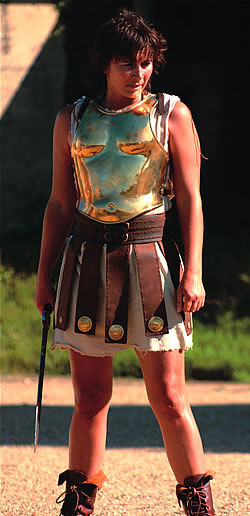 Photo courtesy of Britannia www.durolitum.co.uk I often use my own photos, or public domain images and wide licences like Wikipedia’s Creative Commons Licence or Gnu but you should always acknowledge that and link to the image originator.
Sometimes you can contact a photo owner and ask permission to use their image, but you should always annotate it “Courtesy of XXX” or “With kind permission of YYY”. This is why you see the caption under the picture of the gladiatrix which I use now and again.
The copyright remains with Durolitum as they took the photo at one of their events. The benefit for them is that more people become aware of them.
Even if a friend says, “Sure, lift it from my Facebook page,” it’s best to acknowledge it. And in reverse, if you let somebody use an image you originated, e.g. a photo, you should stipulate that they should credit you – with a link to your website or wherever you originally posted it.
Much more about the nitty-gritty of copyright in this post.
Alison Morton is the author of Roma Nova thrillers – INCEPTIO, CARINA (novella), PERFIDITAS, SUCCESSIO, AURELIA, NEXUS (novella), INSURRECTIO and RETALIO, and ROMA NOVA EXTRA, a collection of short stories. Audiobooks are available for four of the series. Double Identity, a contemporary conspiracy, starts a new series of thrillers. JULIA PRIMA, Roma Nova story set in the late 4th century, starts the Foundation stories. The sequel, EXSILIUM, is now out.
Find out more about Roma Nova, its origins, stories and heroines and taste world the latest contemporary thriller Double Identity… Download ‘Welcome to Alison Morton’s Thriller Worlds’, a FREE eBook, as a thank you gift when you sign up to Alison’s monthly email update. As a result, you’ll be among the first to know about news and book progress before everybody else, and take part in giveaways.
If you enjoyed this post, do share it with your friends!Like this:Like Loading...
 Today I’m welcoming Rory Marsden to the writing blog. Writing as R Marsden, he’s a fellow contributor to Fate, a collection of short stories to be published by Taw River Press next month. Rory is an author and musician and passionate about the Middle Ages. He plays the gittern, a beautiful medieval stringed instrument, ancestor of the guitar; and a thirteenth century recorder, a replica of one which was excavated from medieval ruins in modern-day Poland. He also plays the piano, and there’s nothing medieval about that! Today I’m welcoming Rory Marsden to the writing blog. Writing as R Marsden, he’s a fellow contributor to Fate, a collection of short stories to be published by Taw River Press next month. Rory is an author and musician and passionate about the Middle Ages. He plays the gittern, a beautiful medieval stringed instrument, ancestor of the guitar; and a thirteenth century recorder, a replica of one which was excavated from medieval ruins in modern-day Poland. He also plays the piano, and there’s nothing medieval about that!
His Tales of Castle Rory are Medieval fantasy adventures, in which the demesne of Lord Rory of Hambrig is brought to life. Set in the latter part of the thirteenth century, these stories have adventure, mystery and magic at their heart, not forgetting relationships, romance, friendship and the forging and breaking of ties between people and nations. Running through the Tales are themes of family, loyalty, trust and resilience, together with the other sides of those coins: abandonment, betrayal, loss and disempowerment.
——–
Symbols of battle, loyalty and family connections have been very important through the ages as well as the need to demonstrate these publicly. This was particularly important when most people couldn’t read or write. Even today we like to think we belong to a sports club, interest group or community. The least sporty of us cheer athletes in the Olympic Games. Many of these events involve waving flags and team colours especially if there’s a dollop of patriotic or regional fervour. Armed forces wear the insignia of their regiment, corps or squadron with pride – all signs of belonging. Heraldry is a formal historic way of expressing this sense of belonging. Over to Rory to tell us more.
——–
Before countries had flags and anthems, before men had surnames and passports and ID, and before armies and regiments had cap badges and insignia – there was heraldry.
In the Middle Ages, there were no armies as such. Each nobleman could (and was expected to) raise a few bands of archers, pikeman and mounted men-at-arms. They came from the nobleman’s demesne or territory, and they were trained to fight and hit their target, kitted out with armour and weapons at their lord’s expense and contracted to follow him into battle.
These small bands of archers and pikemen needed to be able to recognise their lord in the mêlée, in the heat of battle, no matter what else was going on. Instant recognition was vital for survival and for cohesion. The lord depended on his retinue, and they depended on him.
And so the lord painted his shield. Perhaps just one colour, perhaps more than one. He had the design stitched into his surcoat too, the outer garment worn over his chain mail. A red shield or a blue one, a green shield with an eagle on it, these were the first insignia of knights who rode into battle.
So, the first designs were simple ones. One colour or two, perhaps with an animal or a bird, a tower or a cross. Anything drawn on top of the base colour needed to be in a contrasting colour, or it would not show up. But – there were only so many combinations that worked. And when the nobleman married a noble lady, whose father wanted his own design to be continued, there was a merging or combining process to be gone through, resulting in a design of two halves. Then again, elder or younger sons must show their father’s special insignia, but somehow make it clear they weren’t actually him…
And so the blazon is born. A blazon is two things: first, it’s the design itself. And then it’s the description of the design, which has to be worded in such a way that all can recognise or reproduce it.
Colours are called tinctures. Big shapes are called ordinaries, and they usually divide the shield into two or more parts. Animals, people, creatures and smaller shapes, superimposed on the main colour(s) are called charges.
Some colours are metals: silver and gold, for example. Metals shouldn’t be placed next to or on top of other metals, and non-metals should not touch other non-metals. This is to make the blazon easier to see, especially in the chaos of the battlefield. The blazon is all about communication and recognition.
So how do we describe a blazon? We start with the field, which is the background. Then come any ordinaries, and finally the charges. First the number, then what it is, and finally, its colour.
 Here’s an example of a simple blazon: Here’s an example of a simple blazon:
Gules six roundels or.
Gules = red, and or = gold. So the background, called the field, is red, and on it we’ll find six golden roundels, which are the charges.
And another:
 Per pale azure and argent two lions sejant or and vert Per pale azure and argent two lions sejant or and vert
Per pale means divided in half vertically, and each half is a different colour: azure = blue, and argent = silver (notice the metal, silver, is next to the non-metal, blue). On top sit the charges, two seated lions (sejant = sitting), coloured gold (or) and green (vert).
I had a lot of fun designing and creating the blazon for my hero, Lord Rory of Hambrig, in my series Tales of Castle Rory. His colours are red and gold, which you know by now are blazoned as gules and or. He has a lion on his shield, and it’s rampant, which means standing on its hind legs. At the bottom of the shield are some flames, in a pattern known as rayonny.
 The field is red, apart from its base, which is flaming with gold. This part would be blazoned: Gules a base rayonny or. Now we have the gold lion standing on its hind legs. A lion rampant or. And then we describe its claws and tongue, which are blue: armed and langued azure. The field is red, apart from its base, which is flaming with gold. This part would be blazoned: Gules a base rayonny or. Now we have the gold lion standing on its hind legs. A lion rampant or. And then we describe its claws and tongue, which are blue: armed and langued azure.
The entire blazon: Gules a base rayonny or a lion rampant or armed and langued azure
I hope you agree it’s a great blazon for the Lord of Hambrig!
—————
Connect with Rory
Website: https://talesofcastlerory.co.uk
Newsletter and readers’ club: https://talesofcastlerory.co.uk/the-household/
—————

The Box of Death – A box that should never be opened. A secret that could destroy them all.
It’s 1263, and Lord Rory of Hambrig presides over a castle that towers above the treacherous River Hurogol. Beyond the fast-flowing waters live a Celtic tribe, who claim the right to live in Hambrig. The ancient treaty has vanished, and tensions simmer as the tribe yearns to reclaim their ancestral lands.
When the king and his son arrive unexpectedly at Castle Rory, the delicate balance of peace begins to unravel. The son bears a gift from the tribe’s chief—a large, mysterious box, rumoured to contain a deadly lizard whose release spells doom.
But that is only the beginning. A strange minstrel appears at the castle, with an eerie knowledge of things yet to come and abilities that defy explanation. His warnings are cryptic and his presence unsettling. But the Box of Death cannot be ignored.
Lord Rory is torn between loyalty to the crown and whispers of inevitable death that follow the Box. With ancient grievances resurfacing and the lives of his people at stake, he must decide whether to open the Box of Death—or let the fate it holds remain sealed.
Will opening the Box unleash unspeakable horrors, or is it the only way to prevent greater destruction?
As ancient grudges and deadly secrets close in around him, Rory realises that some doors, once opened, can never be closed…
Find The Box of Death here: https://mybook.to/TheBoxOfDeath
Alison Morton is the author of Roma Nova thrillers – INCEPTIO, CARINA (novella), PERFIDITAS, SUCCESSIO, AURELIA, NEXUS (novella), INSURRECTIO and RETALIO, and ROMA NOVA EXTRA, a collection of short stories. Audiobooks are available for four of the series. Double Identity, a contemporary conspiracy, starts a new series of thrillers. JULIA PRIMA, Roma Nova story set in the late 4th century, starts the Foundation stories. The sequel, EXSILIUM, is now out.
Find out more about Roma Nova, its origins, stories and heroines and taste world the latest contemporary thriller Double Identity… Download ‘Welcome to Alison Morton’s Thriller Worlds’, a FREE eBook, as a thank you gift when you sign up to Alison’s monthly email update. As a result, you’ll be among the first to know about news and book progress before everybody else, and take part in giveaways.
If you enjoyed this post, do share it with your friends!Like this:Like Loading...
 Photo: AllaSerebrina Love it or hate it, Amazon, is now part of our lives. Even if we prioritise buying local, we slip into the seductive single click of buying online from the world’s biggest universal supplier.
As part of the popular antipathy to large corporates prevalent in the digiverse at present (for a multitude of motivations), many people are taking a stand, ‘Anywhere but Amazon’ is now a cry.
Absolutely a right of every single consumer. We all make choices on principle as well as on financial grounds.
But… (You knew it was coming.)
The impact on independent/self-published authors has been significant. Not on all, but very many have noticed their sales drop. Before you say “Ah, didums“, I’d like to highlight a few things.
Through its KDP pushing portal Amazon has democratised publishing and opened doors otherwise locked and barred. Until self-publishing arrived, every manuscript had to be submitted to an agent who then submitted it to a potential publisher. The next stage was the Star Chamber of the sales & marketing meeting where decisions were made on a commercial rather than a literary basis. Next, those S&M teams had to persuade bookshops to put a book on their limited shelf space. At each stage, most books were rejected.
Many books beautifully written, evocative, thrilling, meaningful, heart wrenching and soul-searching fell into oblivion and readers’ choices were limited. Come the digital revolution, the range of books exploded. Admittedly, there’s a lot of dross, as is published through the more traditional route, but as the indie sector has matured, readers now have an everlasting feast of choice at their fingertips.
Amazon makes no charge to authors who upload their books to its platform. It takes its cut, of course. It’s a business. In general, 30% of the price paid by the customer goes to Amazon and 70% to the vendor, i.e. the author who uploaded the book, as long as the author prices their book in a set range (e.g. for the UK market £1.77 -£9.99). If the book is priced between the minimum 77 pence and £1.76 in the UK, then the author receives 35% of the retail price. Other markets have different ranges, and terms.
But the principle is the same: there is no initial financial barrier for any author.
Amazon paved the way for the ‘one upload for the whole world’ idea. My books sell in so many parts of the world that my brain hurts to attempt counting them all. I would never have been able to distribute my books to Texas, Berlin, Sydney, Vancouver, Sao Paolo, Johannesburg and all parts in between without Amazon.
Now, I instinctively dislike monopolies, so from the very beginning, I decided to distribute my ebooks via several big retailers: Kobo, Apple and B&N Nook. Aggregators such as Draft2Digital provide access to many other smaller retailers. Through Ingram Spark, which prints my non-Amazon paperbacks, those paperbacks are distributed through online stores such as Waterstones, Barnes & Noble, Indigo (Canada), Angus & Robertson (Australia) and libraries all over the place.
Publishing my ebooks via other online retailers means my books cannot be accepted into the Kindle Unlimited scheme which, for a monthly subscription, allows readers to download and read as many books within the scheme as they like. Kobo is more generous. You can sell your ebooks anywhere else and still put them in the Kobo Plus subscription scheme equivalent to Amazon’s Kindle Unlimited.
However, none of the other retailers matches up anywhere near Amazon for sheer sales numbers and thus revenue. Please don’t ask me to take down my books from the Amazon stores – my writing career would be finished and my book income collapse. My own act of rebellion will take the form of highlighting other sales platforms first before Amazon.
Feeble? Possibly, but many ‘small’ authors, especially indies, just can’t manage to pay the bills without Amazon sales.
If you wish to make your own act of rebellion, by all means choose a retailer other than Amazon for your books. I have a Kobo ereader which I rather like, so if I find a book is available there as well, I may well choose to buy it there. Or perhaps I may read the book from Apple on an iPad or phone. The important thing is choice. But for the moment, Amazon is the Big One and that’s the world we live in.
Alison Morton is the author of Roma Nova thrillers – INCEPTIO, CARINA (novella), PERFIDITAS, SUCCESSIO, AURELIA, NEXUS (novella), INSURRECTIO and RETALIO, and ROMA NOVA EXTRA, a collection of short stories. Audiobooks are available for four of the series. Double Identity, a contemporary conspiracy, starts a new series of thrillers. JULIA PRIMA, Roma Nova story set in the late 4th century, starts the Foundation stories. The sequel, EXSILIUM, is now out.
Find out more about Roma Nova, its origins, stories and heroines and taste world the latest contemporary thriller Double Identity… Download ‘Welcome to Alison Morton’s Thriller Worlds’, a FREE eBook, as a thank you gift when you sign up to Alison’s monthly email update. As a result, you’ll be among the first to know about news and book progress before everybody else, and take part in giveaways.
If you enjoyed this post, do share it with your friends!Like this:Like Loading...
 Writing as a life choice isn’t easy. It’s actually a bit mad. But those who have the urge just can’t stop. Writing as a life choice isn’t easy. It’s actually a bit mad. But those who have the urge just can’t stop.
However, everybody will give you advice and I suppose I’m doing the same here. 🙂
Not advice about punctuation, dialogue or how to set the scene or bring characters to life – that’s craft for you to learn yourself.
These are suggestions for the writing life gleaned from things I’ve learnt over the past fifteen years – things I remind myself of every day.
1. Know what you really, really want
Not what other people, e.g. family, spouses and friends think you want, nor what you think you should want. Is writing a want, a need or an obsession, possibly an addiction?
Resist any guilt – internal or external – that writing isn’t a good use of time or a valid job. It’s not selfish, it’s what you want to do.
2. Write now and enjoy it
Write and enjoy it, whatever your goals, whatever kind of writing you do. Of course, it’s foolish to disregard the market if you would like to publish your work, but try not to over anticipate the future, e. g. ‘when I get discovered’, ‘when my book becomes a bestseller’. And don’t let what you’ve done in the past set your writing agenda or stifle your current work. Have a plan, but don’t get obsessed by it. As in life, one thing is sure – everything will change.
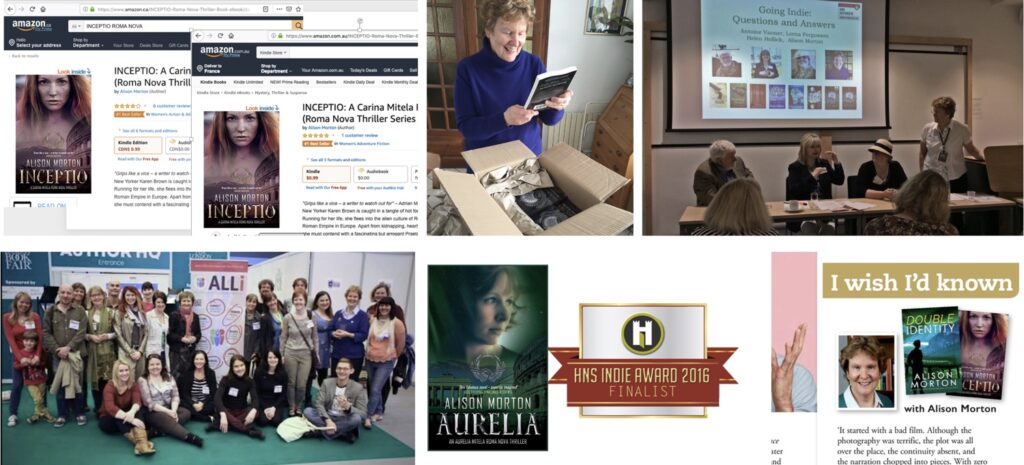
3. Be proud of what you have achieved
It can be by participating in a group, finishing a scene, being placed in a competition, publishing your work, getting a five star review or just making somebody laugh at your comedy writing or be moved by your poem. Most people don’t even start a story, let alone complete it (whatever they say). Resist the urge to compare your own achievements with other people’s. It’s hard, I know, and I’ve experienced twinges of envy, but every writer is different and every story is different.
4. Create and seize opportunities
A hard fact – you are not entitled to recognition however brilliant your writing. It’s very rare to get a ‘break’ or ‘be discovered’ – usually only in novels or films (Sorry!) However, the old adage is true, ‘The harder I work, the luckier I get.’ Use every life event /change and every meeting with other people, especially fellow writers, as an opportunity. And when opportunity is in front of you, grab it.
5. Share with others
You won’t then feel isolated, shut in your bat-cave, desperate to talk about your writing with somebody who understands. Giving back knowledge and experience is more pleasurable than you think. I’ve almost lost count of the talks, panels and workshops I’ve given over the years. The delight when somebody comes up to you afterwards and says you’ve triggered their writing career is immeasurable. You never know, you might spark the next Booker prize winner on their way by giving them one little helpful hint.

Others will be open about sharing with you, to your great benefit. You never stop learning during your whole writing career. Actually, throughout your whole life.
6. Take risks
Dare to read your piece aloud, enter that competition, send your manuscript out to agent and publishers, or for assessment and review. Put your opinion forward, volunteer to lead a session. Try something you think you can’t do – you may surprise yourself.
If you have a deadline or feel overwhelmed or absorbed with a writing project, take the risk of saying no and displeasing others. Explain your reasons in a professional manner.
Creation is always risky. You never know what you may discover in yourself, both good and bad, but it may be something glorious. Humans are naturally risk-averse – thank the Stone Age for that – but do it anyway.
7. Work hard and be persistent
Swanning around being creative is 5% of the job. Sit down every day and write a minimum number of words even if you revise them all another day. Blog posts, articles, short stories, a talk – these all count. Organise your work, research methodically and turn off the Internet while you are inputting your words on the keyboard, unless you really do need to check something vital.
A tip for your mental health – don’t leave the hard slog of writing until a month before the deadline; start now.
Anything else to add to that list?
Alison Morton is the author of Roma Nova thrillers – INCEPTIO, CARINA (novella), PERFIDITAS, SUCCESSIO, AURELIA, NEXUS (novella), INSURRECTIO and RETALIO, and ROMA NOVA EXTRA, a collection of short stories. Audiobooks are available for four of the series. Double Identity, a contemporary conspiracy, starts a new series of thrillers. JULIA PRIMA, Roma Nova story set in the late 4th century, starts the Foundation stories. The sequel, EXSILIUM, is now out.
Find out more about Roma Nova, its origins, stories and heroines and taste world the latest contemporary thriller Double Identity… Download ‘Welcome to Alison Morton’s Thriller Worlds’, a FREE eBook, as a thank you gift when you sign up to Alison’s monthly email update. As a result, you’ll be among the first to know about news and book progress before everybody else, and take part in giveaways.
If you enjoyed this post, do share it with your friends!Like this:Like Loading...
|
Subscribe to Blog via Email
Join 368 other subscribers.
Categories
Archive
|
















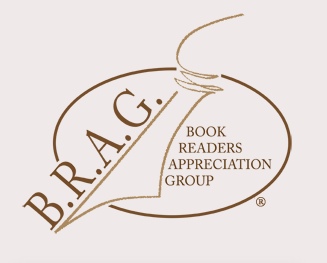

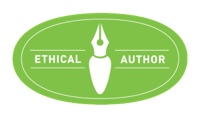
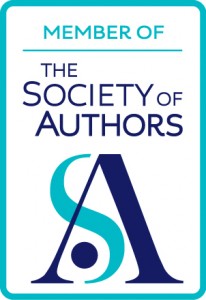





We have received your payment for compensation and will now close this claim.
Thank you for your cooperation.
No further usage rights are granted by this settlement. By the terms and conditions of the settlement the image must be fully deleted from the website, if you have not done so already, make sure that it is fully deleted right away.
Best regards,
Legal Department
COPYTRACK GmbH